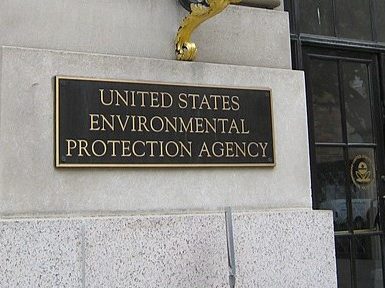A renewable energy measure could be devastating to fragile economies in Arizona’s more remote corners if voters approve it during the general election Nov. 6, local officials say.
If passed, the measure would amend the state constitution to require electric utilities to provide half of their energy from renewable sources by 2030.
Rural Arizona is concerned. More than half a million customers in rural counties and on tribal lands receive electricity from a network of a dozen cooperative utilities and power plants that provide almost 1,500 jobs. If the measure passes, the financial burden to meet the deadline could be insurmountable for some.
While proponents and opponents spend an estimated $12 million on a public battle over the initiative, rural communities are worrying about local power plants shutting down, employees losing jobs, and lost tax revenues, said Skip Becker, who is on the board of the Arizona Economic Development Association and chairs the Rural Committee.
“La Paz County has the second lowest median income in the United States,” said Becker, CEO of the La Paz Economic Development Corporation in Parker. “Our residents cannot afford to have higher bills, especially utility bills.”
If passed, Becker said it would remove one of rural Arizona’s strongest incentives for attracting new development: low electric bills.
Electric cooperative CEOs anticipate rural residents’ bills would go up $45 to $75 a month.
Though the measure is not officially on the ballot, the group backing it, Clean Energy for a Healthy Arizona, handed in more than double the number of petitionsignatures required this month. Arizonans for Affordable Electricity, the committee formed in opposition to the ballot initiative, filed a lawsuit last week in Arizona Superior Court challenging the validity of more than 300,000 signatures.
While the legal battle carries on, alarmed rural chambersof commerce, towns, economic development organizations, tribes and others are speaking out against the initiative. Several expressed anger that an outsider, California billionaire Tom Steyer, is its key backer. They hope voters are listening. Here’s a snapshot look at what they are saying:
Stephanie Irwin, Mayor, Pinetop-Lakeside
If passed, it would potentially lead to the closing of the Springerville and Coronado generating stations and the loss of hundreds of local jobs and tax revenue for schools and public safety, said Irwin, who signed a town council resolution last month opposing the initiative.
“Arizonans would be forced to pay hundreds of millions of dollars for the construction of new infrastructure including solar facilities and carbon emitting natural gas plants that would be necessary to generate electricity when the sun is not shining and the wind is not blowing.”
LoRenzo Bates, Speaker, Navajo Nation, Window Rock
Navajo tribal leaders, who oversee the largest reservation in the country, also acted to oppose the initiative, calling for “a more responsible and realistic” transition to renewable energy that will not imperil Navajo livelihood.
If approved, the initiative could shut down power plants on the reservation, including the Four Corners Power Plant and its feeder mine that have been supplying energy to Arizona Public Service for 50 years. Of the plant’s 659 workers, 82 percent are Native American. At stake is more than $6.3 billion in economic value over the next 30 years.
“We support renewable energy, but we do not support the process that this initiative is proposing,” Bates said. “The people pushing this initiative did not take into account the sovereign status of the Navajo Nation and the impact that it would have on utility rates for Navajo families and our overall economy.”
Creden Huber, CEO, Sulphur Springs Valley Electric Cooperative, Willcox
Passage of the mandate would plummet hopes for economic recovery in the Sierra Vista-Douglas region that is in the Sulphur Springs service boundaries, Huber said.
Its economy is struggling with one of the highest unemployment rates in the state.
Patrick Ledger, CEO, Arizona Generation and Transmission Cooperatives (G&T), Benson
Not-for-profit, members-owned cooperatives have made massive investments to provide electricity in areas where big investor-owned facilities would not serve. They steadily have invested in technology to meet renewable energy standards under current state regulations.
G&T, one of the largest employers in Cochise County, developed 22 megawatts of the lowest cost solar in the last year. It has spent more than $30 million to convert one of its coal units to natural gas, install low NOx burners and non-selective catalytic reduction technology to substantially lower emissions.
“It should offend all reasonable people of Arizona that a California billionaire may in a single irresponsible ballot proposition potentially undercut decades of hard work and careful investment, unnecessarily causing service reliability to plummet, and cause our costs to skyrocket.”
















Enlightened by this article. Thanks!